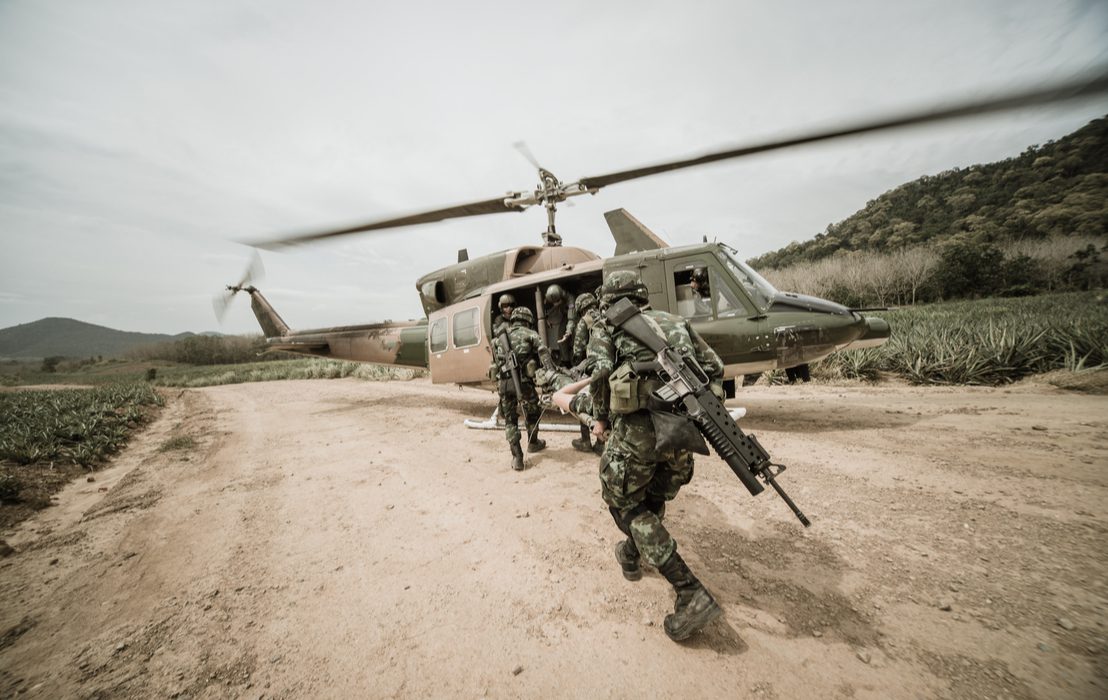DOUGLAS MACGREGOR

In an eerie repetition of the withdrawal from Iraq, on July 5, 2021, American forces left Afghanistan’s Bagram Airfield in the dead of night without informing the Afghan military leadership. Within hours, local Afghans looted the airfield.
Today, Americans are watching as another army created, equipped, and trained by the U.S. military in Afghanistan is melting away under assault by jihadist Islamist groups that fight not for religion or ideology, but against the American and allied military presence—what the Taliban view as foreign occupation or oppression.
Meanwhile, the return on America’s colossal investment of blood and treasure in Iraq and Afghanistan can be calculated. It’s zero. Iraq is effectively a satellite state of greater Iran. Afghanistan may well be the world’s largest narco-state since it is responsible for about 90 percent of global heroin production. Why did these things happen?
At least one explanation is the exclusive control of the Defense and State Departments since 2001 by civilian appointees who psychologically embraced America’s “unipolar moment,” when the American rules-based, liberal international order became truly ascendant. As Professor Stephen Walt explains in The Hell of Good Intentions, after 9/11 Washington’s elites provisioned U.S. foreign policy with the military means to pursue global military-political hegemony.
It is impossible to know whether any of the top political leaders, including three presidents, would have listened to anyone in uniform who counseled restraint, or a radically different approach to interventions than what occurred. Still, early on, former Secretary of Defense Donald Rumsfeld accurately assessed the problem in Afghanistan, telling senior military leaders in April 2002, “We are never going to get the U.S. military out of Afghanistan unless we take care to see that there is something going on that will provide the stability that will be necessary for us to leave. Help!”
All that can be said with certainty is that between 2001 and 2021, none of the senior officers expressed opposition to the policies of intervention and occupation strongly enough to warrant their removal. None felt compelled to leave the service and take their opposing views to the public forum.
When it became clear that the collective strategies and tactics in Afghanistan and Iraq were failing, not only General David Petraeus, but most of America’s senior military leaders chose to prevaricate and distort facts in public to show progress when there was none. How many American lives might have been saved had someone only told the truth will never be known.
There is no getting around it. America’s senior civilian and military leaders (together with their supporting service bureaucracies) are fundamentally incapable of developing or implementing effective military strategy.
Americans may ask, “So what? After all, we’ve muddled through this long. We’ll do better in the future.” But history teaches that when there is no accountability, there is no performance. If the people at the top do not change, then nothing in practice—where policy and power meet reality—will change.
How long should presidents, secretaries of defense, and service secretaries wait to remove senior officers for failing to perform, make progress, and achieve assigned tasks? Between 1942 and the spring of 1945, General George Marshall fired 32 corps and division commanders. It was not personal. It was necessary because, Marshall insisted, the officers had not performed to expectation. In the U.S. Navy, after Pearl Harbor every submarine skipper was replaced in the first 18 months of the Second World War.
Are reliefs inevitable in wartime? Is the selection process inherently flawed? Yes, in many ways it is. The behavior of most senior officers can be explained by an unofficial system of patronage and nepotism that promotes officers to senior rank who are “safe hands,” “good guys,” not troublesome people who are inclined to rock the boat. Simply promoting more non-white officers to senior rank without regard to their demonstrated character, competence, and intelligence won’t change this condition.
As a result, finding senior officers who are competent practitioners of war—officers who will communicate to their civilian bosses the truth of what is really happening and what actions may be required—is difficult. Promotion to three and four stars is usually determined by politics, not competence. In other words, presidents get the generals and admirals they want.
In his 2012 book, Twilight of the Elites, Chris Hayes describes the real strategic problem confronting Americans, “When people come to view all formal authority as fraudulent, good governance becomes impossible, and a vicious cycle of official misconduct and low expectations kicks in.” Well, it’s happened. Low expectations of competence and character in the military’s senior ranks have kicked in.
The question is how much longer will this condition linger? Sir Winston Churchill raised the same question in the summer of 1940, telling the chief of the Imperial General Staff, “We cannot afford to confine Army appointments to persons who have excited no hostile comment in their careers… This is a time to try men of force and vision.”
Short of war, there isn’t much change in the military. However, when defense budgets tank—and they will—new leaders with “force and vision” will be needed to make the tough decisions that reductions in strength and spending will require. Right now, the pickings are slim.
No comments:
Post a Comment